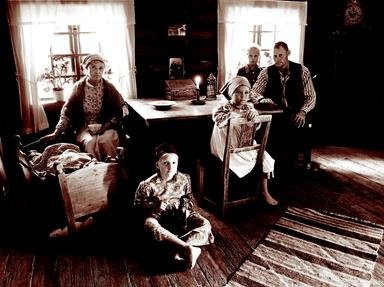Quiz Answer Key and Fun Facts
1. Eastern State Penitentiary is located in this historic city, which also brought Americans their first hospital, medical school, zoo, fire insurance company, public library, bank, municipal water system, and post office.
2. One of the many firsts about Eastern State Penitentiary is evident in its very name. Which first is this?
3. Eastern State Penitentiary brought a technological first to American public buildings. What was it?
4. One aspect of Eastern State Penitentiary was revolutionary, bringing to full fruition what had only been done on a small scale before, and inspiring the design of over 300 other prison facilities around the world. What was this innovative design factor?
5. Eastern State Penitentiary's revolutionary design and system drew visitors from all over the world, including Alexis de Tocqueville and Charles Dickens. Tocqueville approved of the central concept behind Eastern's design, believing it was humane and would achieve its noble ends. Dickens was appalled and pulled no punches in saying so. Time has proven Dickens right. What the reformers had intended as compassionate treatment of prisoners turned out to be cruel and damaging. What was this central concept?
6. Perhaps Eastern State Penitentiary's most famous prisoner, this gangster served eight months there on a weapons charge in 1929. He donated sports uniforms to the facility, and in return was granted a luxurious cell which was rarely locked. Eventually the IRS caught up with him and he served six years in a federal prison.
7. This bank robber, a famous prisoner of Eastern State Penitentiary, took credit for masterminding a breakout that won him roughly eight minutes of freedom in 1945. Had he been honest about his role in the breakout, he'd have possibly said that he was where he was on that April day "because that's where the tunnel is."
8. Charles Yerkes was an American financier who played a major part in developing mass-transit systems in Chicago and London. He contributed nearly $300,000 to the University of Chicago to establish what would become known as the Yerkes Observatory, and had a crater on the moon named after him. What is his connection with Eastern State Penitentiary?
9. In 1924, Prisoner Number C2559 was sentenced to life at Eastern State Penitentiary for killing a cat. Why was Prisoner Number C2559 given such a harsh sentence?
10. Only one prisoner who escaped from Eastern State Penitentiary was never caught or otherwise returned to prison: Leo Callahan. Callahan was one of six inmates to make it out over the 30-foot-tall perimeter wall using a wooden ladder fashioned by George Brown, an inmate who worked in the carpentry shop. How did prisoners manage to hide a ladder that big?
Source: Author
ubermom
This quiz was reviewed by FunTrivia editor
bloomsby before going online.
Any errors found in FunTrivia content are routinely corrected through our feedback system.

